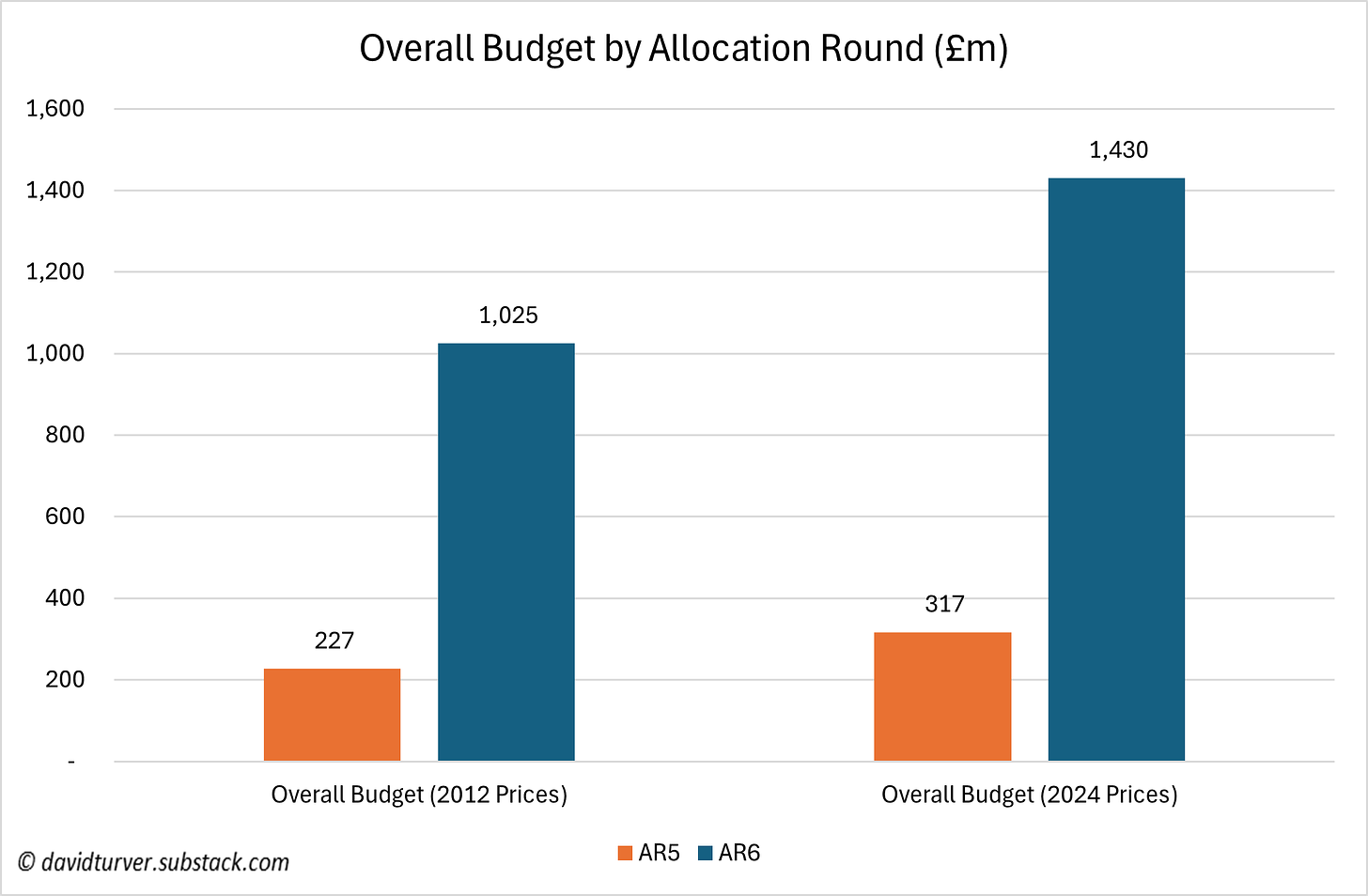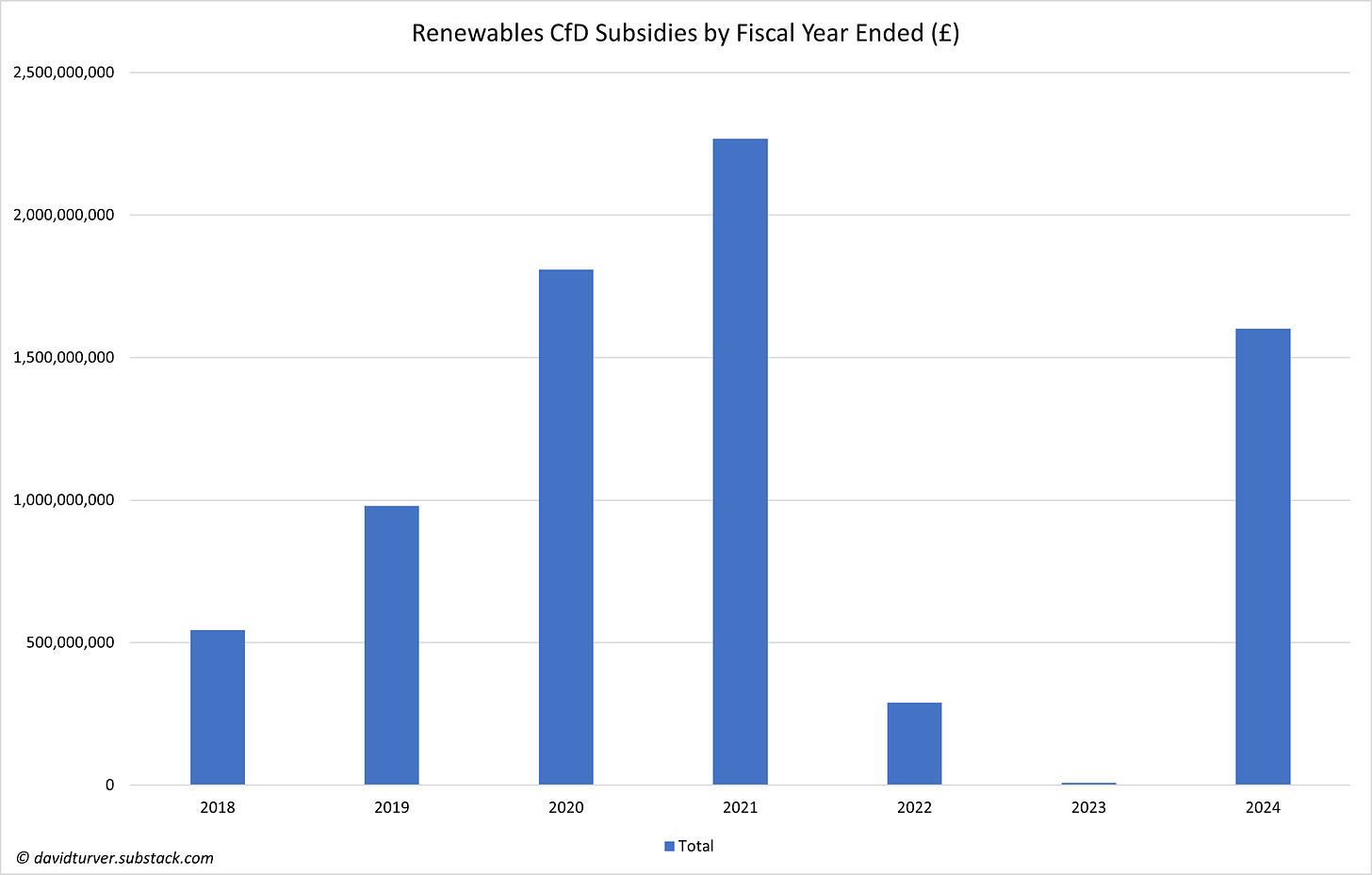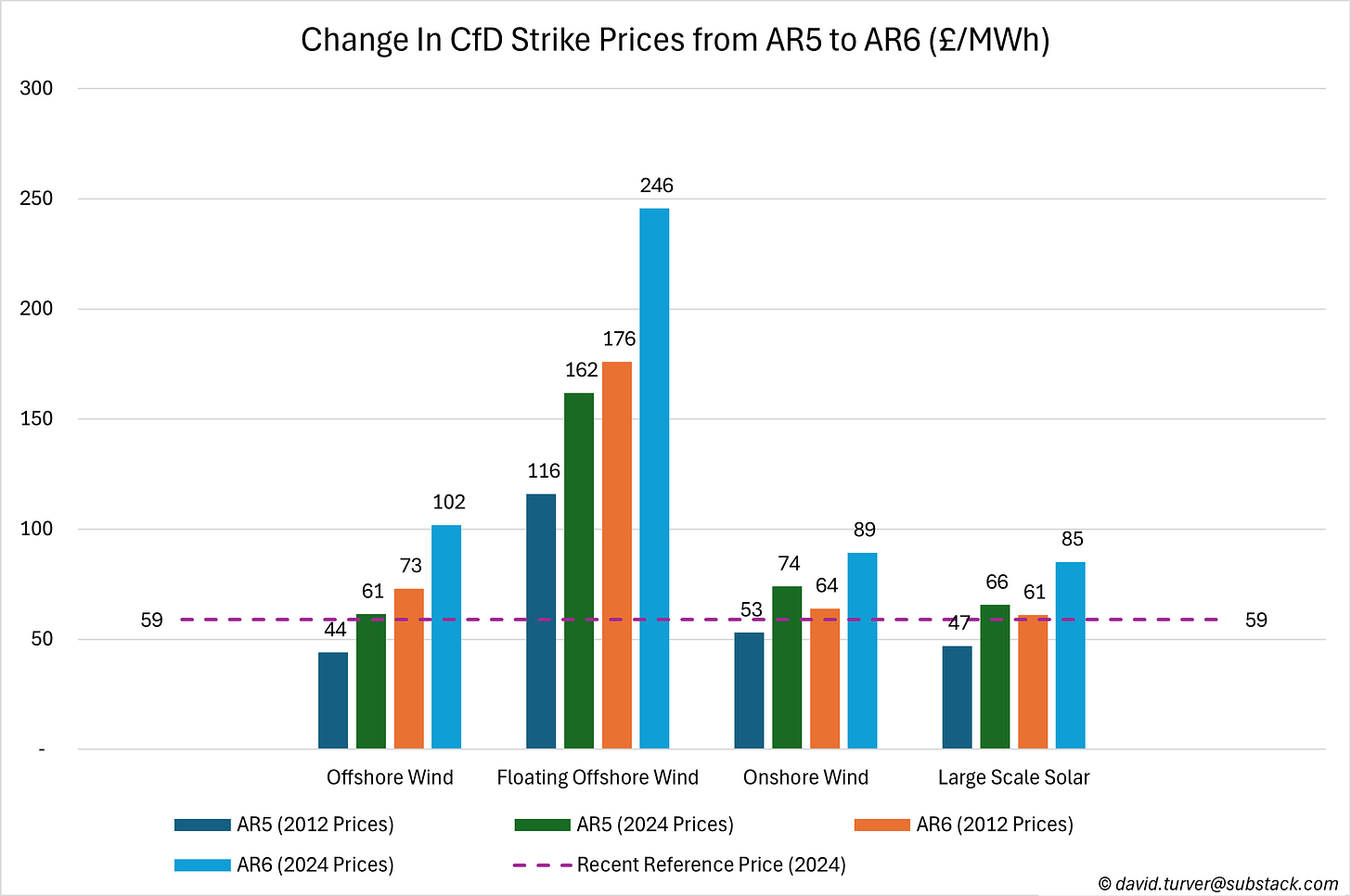Yesterday, the Chancellor used his Budget to announce how much of our money will be allocated to renewables in Allocation Round 6 (AR6). This was positioned as “major backing” to the renewables sector.
The overall budget will be set at £1,025m in 2011-12 prices, which equates to over £1.4bn in today’s money (using the inflation factor of 1.3956 in the budget notice). This represents a 352% increase on the final budget for AR5 (see Figure 1).
To put this in context, £1.4bn is around £50 per household. It is almost as much as the £1.6bn spent on CfD (contracts for differences) subsidies up to late February in the current fiscal year (see Figure 2). The AR6 budget is also around two-thirds of what Ofgem forecasts the existing CfDs will cost in the next financial year. However, the current and next fiscal years cover all allocation rounds since 2017 and yesterday’s announcement is for just one round.
The overall budget has been split into three pots. Pot 1 allocates £120m to: Energy from Waste with CHP, Hydro, Landfill Gas, Onshore Wind, Sewage Gas, Remote Island Wind and Solar. Pot 2 assigns £105m to Advanced Conversion Technologies, Anaerobic Digestion, Dedicated Biomass, Floating Offshore Wind, Geothermal, Tidal Stream and Wave power.
The lion’s share of the budget of the budget is allocated to Pot 3, with £800m earmarked for offshore wind. Up to the full £800m could be allocated to what are termed “Permitted Reduction” projects. These projects are those that won contracts in earlier rounds and have now admitted that they cannot deliver for the price they agreed. The wording of what this means exactly is somewhat opaque:
This process has allowed projects to withdraw a maximum of 25% of their original total project capacity from their CfD contract and now use that reduced capacity to bid into AR6 as a standalone project.
Does it mean that if say, a 1GW project won a contract in AR4 can now withdraw up to 250MW from that project and bid it in AR6, or does it mean that the project can be reduced to at least 750MW and the whole reduced project can be bid into AR6? Either way, projects awarded at low prices in earlier rounds can now apply for an extra bung which rather makes a mockery of claims than wind is nine times cheaper than gas.
An amount up to the full £800m can also be allocated to new offshore wind projects.
Big Increase in CfD Strike Prices Confirmed
As has been discussed previously, no offshore wind projects won contracts in AR5 because the prices on offer were too low. Accordingly, the Government has taken the opportunity to confirm the strike prices on offer for AR6 will be considerably higher than in AR5 (see Figure 3).
In 2024 money, offshore wind prices rise 66% from £61/MWh in AR5 to £102/MWh in AR6. Onshore wind goes up 21% to £89/MWh and large-scale solar increases 30% to £85/MWh. All these prices are notably above the average reference price so far in February 2024 of around £59/MWh used to calculate existing subsidies. Typically, this reference price is set by gas, so guess what, all these new renewables are going to be considerably more expensive than current gas-fired generation. Electricity bills are never coming down, and it seem ministers don’t care and they are on a death wish to kill the economy and further impoverish the poor.
Conclusions
The Government may try its best to position this as ‘major backing’ for the renewables sector. What it really means is it is massively undermining the energy consumer by adding another £1.4bn to electricity bills. It claims it is shielding us from volatile fossil fuel prices, but at the same time, it extended the windfall tax on energy companies, thus ensuring investment in new sources of supply falls and either we import more gas or the price goes up.
And remember, these CfD strike prices are index-linked, so the nominal price will go up each year with inflation, permanently baking in high electricity prices. What the Government giveth with a cut in National Insurance, it taketh away in subsidies for renewables. Consumers have been sacrificed on the altar of Net Zero, again.
David Turver writes the Eigen Values Substack page, where this article first appeared.














To join in with the discussion please make a donation to The Daily Sceptic.
Profanity and abuse will be removed and may lead to a permanent ban.